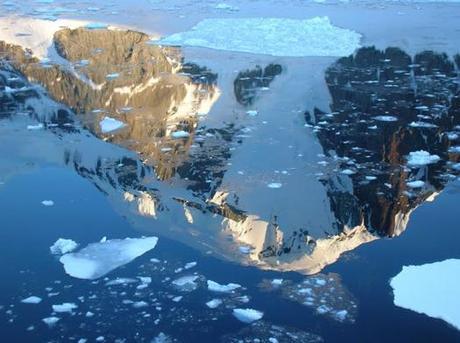
I covered this topic this morning at Gadling.com, but thought it was worth sharing here as well. Yesterday I received a press release from the International Association of Antarctic Tour Operators that gave some interesting statistics on the Antarctic tourism season that just ended. Those numbers indicated that there was a slide in the number of visitors to Antarctica this year, with 8.3% fewer people traveling in the region. This trend is expected to continue in the season ahead as well, with even more significant drops in the number of visitors to the frozen continent.
According to the IAATO, 33,824 people traveled in and around Antarctica in the 2010-2011 season. That number is down from the 36,875 from the year before. Of those travelers, 18,534 actually set foot on the continent itself, while 14,373 of them chose to just cruise the Southern Ocean instead. These numbers were reported by members of the IAATO, which carry clients throughout the region aboard small and medium sized expedition ships and yachts. The "cruise-only" folks were generally aboard larger cruise ships.
While the 8.3% drop is fairly substantial, that's nothing compared to what is projected for the 2011-2012 season. This August, a ban on heavy fuel oils will go into effect, limiting the number of larger ships that can enter the waters around Antarctica as well. That will most likely effect the cruise-only numbers, which are expected to drop below 5000 travelers total. When factoring in an economy that continues to struggle, the IAATO believes that there will be as much as a 25% drop in travel to Antarctica in the season ahead.
This is good news for environmentalists who have long feared that increased traffic would damage the fragile environments in Antarctica. These substantially lower numbers should help to protect the region from too much harm, and the ban on heavy fuels is designed to do the very same thing.
On the other hand, tour operators in the region can't be happy with the projections, as they could potentially be scrambling to fill their cabins. Obviously the largest decline will be in the cruise only section, where the number of ships operating in the Southern Ocean will be reduced from 12 down to just five, but if the expectations of a poor economy continue, we may see some good bargains for those looking to travel to the very deep south later this year.

